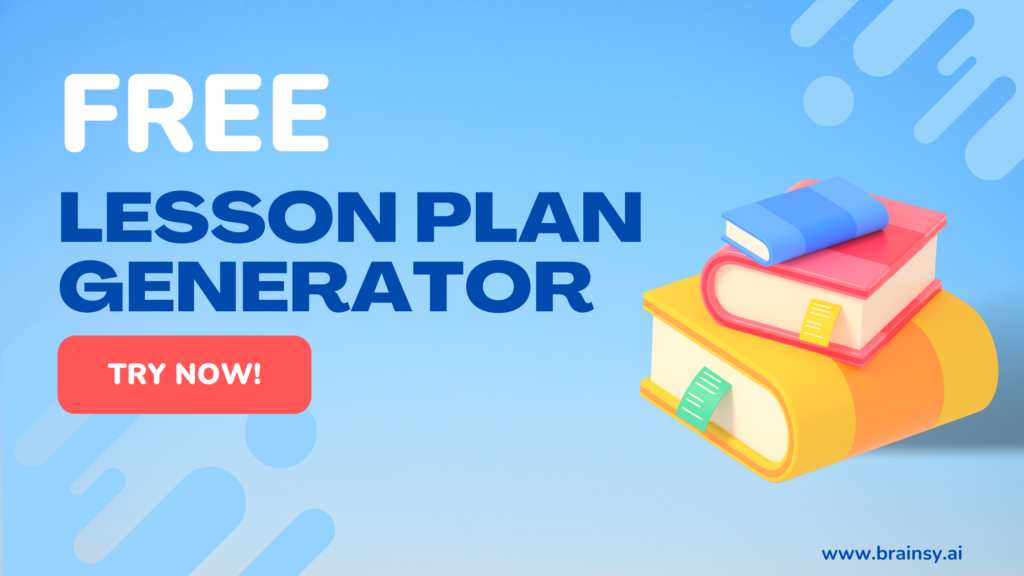Understanding Teacher Responsibilities
In the realm of education, the role of a school teacher extends beyond mere instruction. Teacher responsibilities encompass a wide range of tasks that contribute significantly to the development and success of students. These responsibilities are not just confined to the classroom; they ripple into the broader educational environment, affecting how students learn and grow. As educators, understanding these duties of teachers can help us better serve our students and contribute to a more effective educational system.
Teaching responsibilities involve planning lessons, creating a conducive learning environment, and assessing student learning. These tasks require a balance of creativity and analytical thinking. Planning involves not just what to teach, but how to present the material in a way that engages students and caters to different learning styles. By doing so, teachers can ensure that each student receives the attention and support they need.
Moreover, understanding teacher responsibilities involves recognizing the importance of continuous professional development and self-assessment. As educators, we must stay updated with the latest educational trends and techniques. This commitment to lifelong learning helps enhance our teaching strategies, ensuring they remain relevant and effective in meeting the needs of our students. Many teachers pursue a teacher education program or additional education courses to stay current in their field. Self-awareness and reflection on one’s teaching practices are crucial for ongoing improvement and effectiveness in the classroom.
The Importance of Teacher Responsibilities in Education
The significance of teacher responsibilities in education cannot be overstated. They form the backbone of a successful educational experience, providing structure and guidance. The duties of teachers ensure that students not only acquire knowledge but also develop critical thinking skills, emotional intelligence, and a love for learning. By embracing these responsibilities, educators can create a nurturing environment where students feel valued and motivated.
In addition to academic instruction, teachers play a crucial role in shaping the social and emotional development of their students. They are often role models, influencing students’ attitudes towards learning and life. By demonstrating empathy, patience, and integrity, teachers help foster a positive classroom culture that encourages respect and collaboration among students. Qualities such as reliability, honesty, and leadership are essential for teachers to effectively fulfill their roles and uphold the core values of education.
Furthermore, teacher responsibilities are vital for fostering an inclusive educational environment. Educators must be aware of the diverse needs of their students and adapt their teaching methods accordingly. This includes accommodating students with special needs, English language learners, and those from different cultural backgrounds. By integrating AI tools for teachers, educators can personalize learning, track progress more effectively, and provide targeted support. By doing so, teachers ensure that all students have equal opportunities to succeed and reach their full potential, contributing to overall academic achievement.
Top 10 Responsibilities of a Teacher
- Lesson Planning: Creating comprehensive and engaging lesson plans that align with curriculum standards and learning objectives.
- Classroom Management: Maintaining a productive and respectful learning environment through effective behavioral management strategies.
- Student Assessment: Evaluating student performance through tests, assignments, and observations to track academic achievement and enhance student learning.
- Communication: Engaging in effective communication with parents, colleagues, and administrators to support student success and maintain professional relationships.
- Professional Development: Pursuing ongoing education, self-assessment, and training to enhance teaching skills and stay current with instructional methods.
- Inclusive Education: Adapting teaching strategies to meet the diverse needs of students, including those in elementary school settings.
- Mentoring and Guidance: Providing support and advice to students regarding academic and personal development.
- Resource Management: Utilizing available resources effectively, including instructional technologies and teaching materials, to enhance learning experiences.
- Administrative Tasks: Completing necessary paperwork and reports related to student progress and school operations, often in collaboration with the principal and education administration.
- Community Engagement: Participating in school events and activities to foster a sense of community and promote family unity.
These responsibilities highlight the multifaceted nature of teaching and underscore the dedication required to excel in this profession. By embracing these roles, teachers can significantly impact the lives of their students.
Responsibilities of a Substitute Teacher
Substitute teachers hold a unique position within the educational system, stepping in to ensure continuity in the classroom when regular teachers are unavailable. The responsibilities of a substitute teacher include effectively managing the classroom, following lesson plans left by the regular teacher, and maintaining a positive learning environment. These tasks require adaptability and strong communication skills to engage students and maintain their interest.
In addition to delivering instruction, substitute teachers must be prepared to handle unexpected challenges. This may include addressing behavioral issues, assisting with special needs students, or adjusting lesson plans to accommodate different learning paces. The ability to think on their feet and remain calm under pressure is crucial for substitute teachers to succeed in their roles.
Moreover, substitute teachers play a vital role in maintaining the educational momentum. By ensuring that learning continues seamlessly in the absence of the regular teacher, substitutes contribute to the overall success and stability of the educational environment. Their ability to quickly adapt and connect with students is essential for minimizing disruptions and keeping students on track with their studies. Utilizing a free teacher tool can further support substitutes in managing lesson plans, engaging students, and maintaining classroom consistency.
Teacher Duties and Responsibilities in Different Educational Settings
Teacher responsibilities can vary significantly depending on the educational setting in which they work. In elementary schools, elementary school teachers often focus on foundational skills such as literacy and numeracy while fostering social and emotional development. Elementary school teachers play a crucial role in shaping young minds and preparing them for future academic success. In contrast, secondary school teachers may specialize in specific subjects, emphasizing critical thinking and advanced problem-solving skills.
In higher education, the responsibilities of teachers include conducting research, publishing scholarly articles, and mentoring students pursuing advanced degrees. These educators are often involved in shaping curriculum and policy development, contributing to the evolution of their academic disciplines. The ability to inspire and motivate students to pursue their interests and goals is a crucial aspect of teaching at this level.
Special education settings present unique challenges and responsibilities for teachers. Educators working with students who have special needs must develop individualized education plans (IEPs) and employ specialized teaching strategies to ensure that these students receive equitable educational opportunities. Collaboration with support staff, therapists, and families is essential to create a supportive and inclusive learning environment.
Responsibilities of a Daycare Teacher
Daycare teachers play a vital role in the early development of children, laying the foundation for lifelong learning and social skills. Their responsibilities include creating a safe and nurturing environment where young children can explore and learn. Daycare teachers must plan age-appropriate activities that promote cognitive, physical, and emotional development.
In addition to planning activities, daycare teachers are responsible for monitoring the health and safety of the children in their care. This includes ensuring that children are following hygiene practices, providing nutritious snacks, and supervising playtime to prevent accidents. By maintaining a vigilant and caring approach, daycare teachers help foster a sense of security and trust among the children.
Moreover, effective communication with parents is a crucial responsibility of daycare teachers. They must provide regular updates on children’s progress, address any concerns, and collaborate with parents to support each child’s development. By building strong professional relationships with families, daycare teachers can create a cohesive support system that benefits the child’s growth and learning.
Special Education Teacher Responsibilities
Special education teachers have a unique and challenging role, requiring them to address the diverse needs of students with disabilities. Their responsibilities include developing and implementing individualized education plans (IEPs) tailored to each student’s specific requirements. This involves collaborating with parents, specialists, and other educators to create a comprehensive and effective learning strategy.
In the classroom, special education teachers must adapt teaching methods and materials to accommodate various learning styles and abilities. They often employ assistive technologies and alternative communication methods to ensure that all students can participate in the learning process. Their patience and creativity are essential in helping students overcome obstacles and achieve their educational goals.
Additionally, special education teachers play a critical role in advocating for their students. They work to ensure that students receive the necessary accommodations and support both within and outside the classroom. By leveraging AI tools for students, educators can provide personalized learning resources, assist with skill development, and enhance accessibility. By fostering an inclusive environment and promoting awareness, special education teachers help break down barriers and empower students to reach their full potential.
Teacher Assistant Responsibilities
Teacher assistants are invaluable members of the educational team, providing support to teachers and enhancing the learning experience for students. Their responsibilities include assisting with classroom management, preparing teaching materials, and providing one-to-one support to students who need extra help. Teacher assistants often work with small groups, helping to reinforce concepts and ensure that all students understand the material.
In addition to instructional support, teacher assistants are responsible for maintaining a safe and orderly classroom environment. This includes supervising students during activities, managing transitions between lessons, and addressing minor behavioral issues. By helping to create a structured and supportive atmosphere, teacher assistants contribute to a positive and productive learning environment.
Furthermore, teacher assistants play a crucial role in communication and collaboration within the school community. They often serve as a bridge between teachers, students, and parents, facilitating the exchange of information and ensuring that everyone is on the same page. Their ability to work effectively with diverse groups of people is essential for fostering a cohesive and supportive educational environment.
How to Highlight Teacher Responsibilities on Your Resume
When crafting a resume, it’s important to effectively showcase your teaching responsibilities to stand out to potential employers. Start by creating a clear and concise summary of your teaching experience, highlighting your most significant accomplishments and contributions. Use action verbs and specific examples to demonstrate your impact in previous roles, including any experience with student teaching or virtual classroom environments.
Consider organizing your resume into sections that reflect different aspects of your responsibilities, such as lesson planning, classroom management, and student assessment. Include quantifiable achievements, such as improvements in student performance or successful implementation of new teaching strategies. This approach provides a comprehensive view of your capabilities and demonstrates your commitment to excellence in education.
Additionally, don’t forget to highlight any special skills or certifications that set you apart from other candidates. This might include a bachelor’s degree in education, teaching certification, proficiency in educational technologies, or experience in diverse educational settings. Emphasize your ability to use instructional technologies and create effective course materials. By presenting a well-rounded and detailed picture of your teacher responsibilities, you can increase your chances of securing a position that aligns with your skills and interests.
Conclusion: Embracing the Role of a Teacher
Embracing the multifaceted responsibilities of a teacher with Brainsy AI is both a privilege and a challenge. As educators, we have the opportunity to shape the minds and futures of our students, guiding them towards success and fulfillment. By understanding and embracing our responsibilities, we can create a positive impact that extends beyond the classroom and into the broader community.
The journey of a teacher is one of continuous growth and learning. By staying committed to our professional development, engaging in self-assessment, and remaining open to new ideas, we can adapt to the ever-changing landscape of education. This dedication not only benefits our students but also enriches our own lives, providing a sense of purpose and fulfillment.
If you’re passionate about making a difference in the lives of students and are ready to embrace the rewarding challenges of teaching, consider exploring opportunities to further develop your skills and knowledge. Connect with fellow educators, participate in workshops, and stay informed about the latest educational trends. Together, we can continue to elevate the teaching profession and inspire future generations.
Ready to take the next step in your teaching journey? Explore professional development opportunities and connect with a network of passionate educators today. Let’s make a difference, one student at a time







